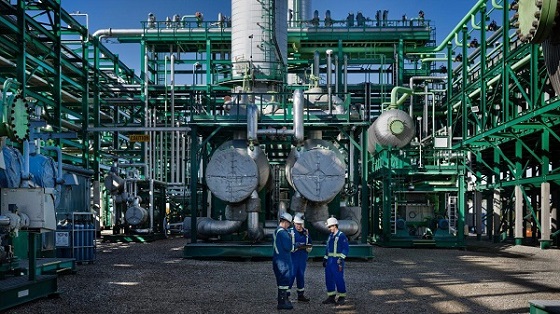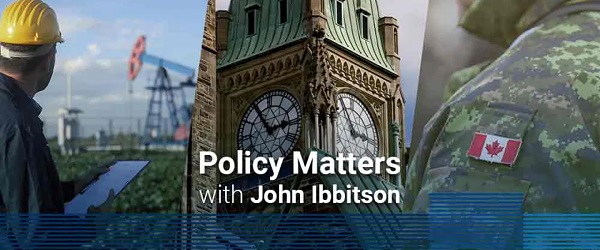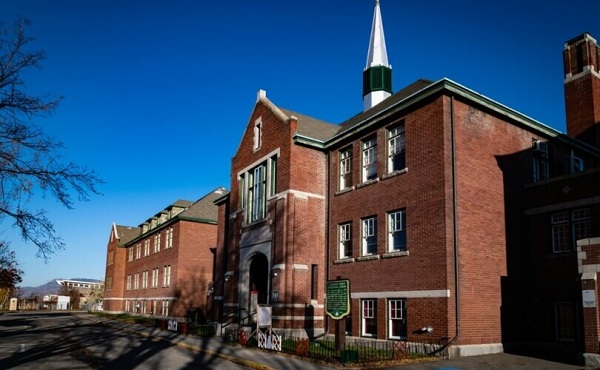Alberta
Province freezes funds for doctors and launches process to work out a new funding formula

New physician funding framework announce
Alberta will maintain physician funding at $5.4 billion, the highest level ever, and implement its final offer to the Alberta Medical Association (AMA) to avoid $2 billion in cost overruns.
Existing terms will remain in place until March 31, 2020. A new funding framework will then be introduced, in a multi-year process that will require consultation with the AMA at all stages. The new framework will make changes proposed during negotiations to prevent cost overruns, align benefit programs and administrative fees with those of comparable provinces, and improve services for patients.
The eleven consultation proposals will also be implemented on March 31. This includes phasing in changes to complex modifiers, reducing the rate physicians can charge for this billing code to $9 from $18, for a period of one year before the code is removed in 2021-22. In summer 2020, at the direction of the Minister of Health, the Government of Alberta will also introduce a new alternative relationship plan (ARP) with built-in transition benefits to encourage physicians to move from fee-for-service to a three-year contract.
“Our province is facing cost overruns of $2 billion in the next three years due solely to physician compensation. If left unaddressed, these costs would impede efforts to reduce surgical wait times, improve mental health and addiction services, and expand the number of continuing care beds. Despite repeated efforts, the AMA failed to put forward alternatives that would hold the line on physician compensation. The new framework announced today will prevent cost overruns, allow our province to improve services for patients, and still ensure that Alberta’s doctors are amongst the highest paid physicians in all of Canada.”
Background
- The new funding framework will maintain government’s current level of spending on physicians at $5.4 billion.
- The new funding framework avoids anticipated cost overruns of $2 billion over the next three years.
- Alberta has been spending more on physician salaries than other provinces, yet most of its health outcomes are below national averages.
- A doctor in Alberta earns approximately $90,000 more than a doctor in Ontario and physicians’ fees have almost tripled since 2002.
Elements of the new funding framework
- Changes to Alberta’s complex modifier billing system. The rate physicians are able to charge for complex modifiers will be reduced to $9 from $18 for a period of one year before this billing code is removed in 2021-22. Once the new framework is fully phased in, physicians will be able to bill an additional fee after spending 25 minutes with a complex patient case. Alberta remains the only province in Canada that allows for a top-up payment for complex visits.
- Removal of the comprehensive annual care plan from the list of insured services. Currently, physicians can also bill for a similar consultation called a comprehensive annual visit. No other province in Canada compensates physicians twice for annual care consultation.
- Implementation of a new daily cap, modelled after a cap in place in British Columbia, of 65 patients per day. Large patient loads can contribute to physician burnout and may compromise patient safety and quality of care.
- Removing physician overhead subsidies from all hospital-based services. Physicians who work in AHS facilities should not be billing for overhead costs that their community physician colleagues face, such as leases, hiring staff and purchasing equipment.
- Ending of clinical payments, or stipends, by AHS to physicians. This change ends duplication of payments to contracted physicians.
Timeline
- In September 2019, government provided notice to the AMA that it intended to begin negotiations on the AMA Agreement. The notification provided time for the AMA to prepare its proposals.
- In November 2019, negotiations began with the AMA to reach a new agreement; government began consultations on 11 proposed changes to the schedule of medical benefits (SOMB, or “insured services”).
- In January 2020, negotiations and consultations proceeded with no agreement reached. Mediation, on both the negotiation and consultation proposals, began January 31 and continued into February.
- The parties were not able to reach an agreement during mediation.
- Government will implement its final offer from the negotiating table, including the 11 consultation proposals, on March 31.
Alberta
Cross-Canada NGL corridor will stretch from B.C. to Ontario

Keyera Corp.’s natural gas liquids facilities in Fort Saskatchewan. Photo courtesy Keyera Corp.
From the Canadian Energy Centre
By Will Gibson
Keyera ‘Canadianizes’ natural gas liquids with $5.15 billion acquisition
Sarnia, Ont., which sits on the southern tip of Lake Huron and peers across the St. Clair River to Michigan, is a crucial energy hub for much of the eastern half of Canada and parts of the United States.
With more than 60 industrial facilities including refineries and chemical plants that produce everything from petroleum, resins, synthetic rubber, plastics, lubricants, paint, cosmetics and food additives in the southwestern Ontario city, Mayor Mike Bradley admits the ongoing dialogue about tariffs with Canada’s southern neighbour hits close to home.
So Bradley welcomed the announcement that Calgary-based Keyera Corp. will acquire the majority of Plains American Pipelines LLP’s Canadian natural gas liquids (NGL) business, creating a cross-Canada NGL corridor that includes a storage hub in Sarnia.
“As a border city, we’ve been on the frontline of the tariff wars, so we support anything that helps enhance Canadian sovereignty and jobs,” says the long-time mayor, who was first elected in 1988.
The assets in Sarnia are a key piece of the $5.15 billion transaction, which will connect natural gas liquids from the growing Montney and Duvernay plays in B.C. and Alberta to markets in central Canada and the eastern U.S. seaboard.
NGLs are hydrocarbons found within natural gas streams including ethane, propane and pentanes. They are important energy sources and used to produce a wide range of everyday items, from plastics and clothing to fuels.
Keyera CEO Dean Setoguchi cast the proposed acquisition as an act of repatriation.
“This transaction brings key NGL infrastructure under Canadian ownership, enhancing domestic energy capabilities and reinforcing Canada’s economic resilience by keeping value and decision-making closer to home,” Setoguchi told analysts in a June 17 call.
“Plains’ portfolio forms a fully integrated cross Canada NGL system connecting Western Canada supply to key demand centres across the Prairie provinces, Ontario and eastern U.S.,” he said.
“The system includes strategic hubs like Empress, Fort Saskatchewan and Sarnia – which provide a reliable source of Canadian NGL supply to extensive fractionation, storage, pipeline and logistics infrastructure.”
Martin King, RBN Energy’s managing director of North America Energy Market Analysis, sees Keyera’s ability to “Canadianize” its NGL infrastructure as improving the company’s growth prospects.
“It allows them to tap into the Duvernay and Montney, which are the fastest growing NGL plays in North America and gives them some key assets throughout the country,” said the Calgary-based analyst.
“The crown assets are probably the straddle plants in Empress, which help strip out the butane, ethane and other liquids for condensate. It also positions them well to serve the eastern half of the country.”
And that’s something welcomed in Sarnia.
“Having a Canadian source for natural gas would be our preference so we see Keyera’s acquisition as strengthening our region as an energy hub,” Bradley said.
“We are optimistic this will be good for our region in the long run.”
The acquisition is expected to close in the first quarter of 2026, pending regulatory approvals.
Meanwhile, the governments of Ontario and Alberta are joining forces to strengthen the economies of both regions, and the country, by advancing major infrastructure projects including pipelines, ports and rail.
A joint feasibility study is expected this year on how to move major private sector-led investments forward.
Alberta
Alberta school boards required to meet new standards for school library materials with regard to sexual content

Alberta’s government has introduced new standards to ensure school library materials are age-appropriate.
School libraries should be safe and supportive places where students can learn and explore without being exposed to inappropriate sexual content. However, in the absence of a consistent standard for selecting age-appropriate library materials, school boards have taken different approaches, leading to concerns about safeguards in place.
In response to these concerns, and informed by feedback from education partners and the public, Alberta’s government has created standards to provide school boards with clear direction on the selection, availability and access to school library materials, such as books.
“Our actions to ensure that materials in school libraries don’t expose children to sexual content were never about banning books. These new standards are to ensure that school boards have clear guidance to ensure age-appropriate access to school library materials, while reflecting the values and priorities of Albertans.”
The new standards set clear expectations for school library materials with regard to sexual content and require school boards to implement policies to support these standards.
Standards for school library materials
Under the new standards, school libraries are not permitted to include library materials containing explicit sexual content. Non-explicit sexual content may be accessible to students in Grade 10 and above, provided it is age-appropriate.
“Protecting kids from explicit content is common sense. LGBTQ youth, like all children, deserve to see themselves in stories that are age-appropriate, supportive and affirming – not in material that sexualizes or confuses them.”
School boards must also regularly review their school library collections, publish a full list of available materials and ensure that a staff member supervises students’ access to school library materials. School boards will have to remove any materials with explicit sexual content from their school libraries by October 1.
School board policies and procedures
All school boards must have publicly available policies that align with the new standards for selecting and managing library materials by January 1, 2026. School boards can either create new policies or update existing ones to meet these requirements.
These policies must outline how school library materials are selected and reviewed, how staff supervise students’ access throughout the school day, and how a student, parent, school board employee or other member of the school community can request a review or removal of materials in the school library. School boards are also required to clearly communicate these policies to employees, students and parents before January 2026.
“A robust, grade- and age-appropriate library catalogue is vital for student success. We welcome the ministry’s initiative to establish consistent standards and appreciate the ongoing consultation to help craft a plan that will serve our families and communities well.”
“Red Deer Public Schools welcomes the new provincial standards for school library materials. Our division is committed to maintaining welcoming, respectful learning spaces where students can grow and thrive. Under the new standards for school libraries, we remain dedicated to providing learning resources that reflect our values and support student success.”
Quick facts
- The new standards will apply to public, separate, francophone, charter and independent schools.
- The ministerial order does not apply to municipal libraries located within schools or materials selected for use by teachers as learning and teaching resources.
- From May 26 to June 6, almost 80,000 people completed an online survey to provide feedback on the creation of consistent standards to ensure the age-appropriateness of materials available to students in school libraries.
Related information
- Ministerial Order
- School library standards engagement
- Reference Materials: Content warning: this document contains graphic content that may be disturbing to viewers and is not appropriate for young viewers. Viewer discretion is advised.
-

 COVID-1921 hours ago
COVID-1921 hours agoFDA requires new warning on mRNA COVID shots due to heart damage in young men
-

 Business19 hours ago
Business19 hours agoCarney’s new agenda faces old Canadian problems
-

 Daily Caller16 hours ago
Daily Caller16 hours agoBlackouts Coming If America Continues With Biden-Era Green Frenzy, Trump Admin Warns
-

 Indigenous20 hours ago
Indigenous20 hours agoInternal emails show Canadian gov’t doubted ‘mass graves’ narrative but went along with it
-

 Bruce Dowbiggin22 hours ago
Bruce Dowbiggin22 hours agoEau Canada! Join Us In An Inclusive New National Anthem
-

 Business2 days ago
Business2 days agoCBC six-figure salaries soar
-

 Addictions2 days ago
Addictions2 days agoCan addiction be predicted—and prevented?
-

 Addictions2 days ago
Addictions2 days agoMore young men want to restrict pornography: survey



